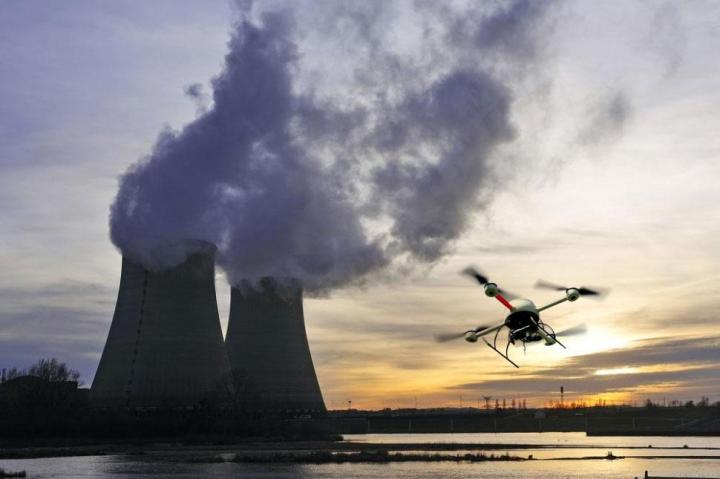
And as YouTube fills up with footage showing off awesome aerial shots of dramatic locations around the world taken by camera-equipped drones, the oil industry and others are finding them increasingly useful, too, for tasks such as aerial inspection of important equipment.
That’s all well and good, but it was of course only a matter of time before these quadcopters started hitting the headlines in a more sinister context.
Several incidents involving drones coming close to passenger planes in both the US and UK have made the news recently, while just last week the NYPD’s deputy chief, Salvatore DiPace, said he has concerns that terrorists could use a quadcopter or a more sophisticated unmanned aerial vehicle to launch an attack on the city. Even ISIS is reportedly using one to shoot aerial footage of Kobani, the Syrian city it’s fighting to take from Kurdish militias.
Drone flights over nuclear plants
And now, in France, the authorities are investigating recent drone flights over a number of its nuclear power plants. Despite playing down security concerns, French officials must be feeling a sense of unease about the flights, especially as they have no idea who is carrying them out, or, more importantly, the motive behind them.
In the last month alone, there have been reports of 15 flyovers over nine of its 19 nuclear plants across the country, with the machines described as small and civilian or commercial. French law stipulates that all types of aircraft are prohibited from entering a 3-mile (5 km) zone around a nuclear plant.
France’s state-owned EDF power company has said that up to now the drone flights have had no impact on the “security or the functioning” of the plants, adding that it thought the drones were not likely to cause any damage. However, some have voiced concerns that the drone operator, or operators, could be gathering detailed imagery of the sites, which could pose a threat to security.
Greenpeace, which has denied being behind the flights, said some of the incidents took place at up to four far-apart locations on the same day, suggesting it’s “a large-scale operation.”
While the environmental group has accused EDF of not taking the incidents seriously enough, French interior minister Bernard Cazeneuve recently insisted that measures to “neutralize” the drones had now been put in place, though he declined to elaborate.
Meanwhile, investigations are continuing in an effort to find out who’s behind these mysterious drone flights.


